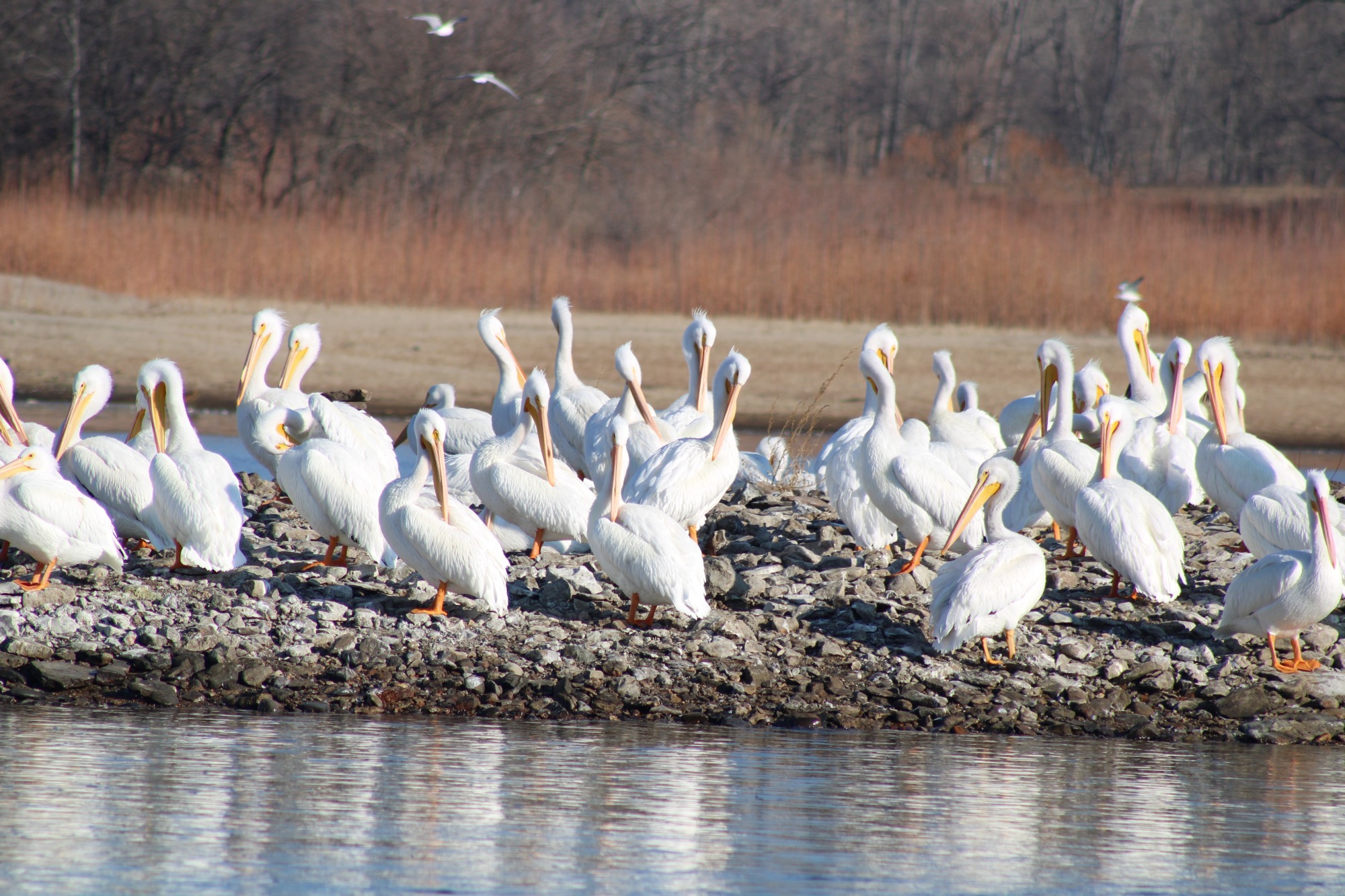January Nature Notes

Naturalist’s Nature Notes – January, 2024
“One touch of Nature makes the whole world kin” -William Shakespeare
New Year, New Beginnings! Happy New Year! What a great time to consider a family plan of daily outdoor outings through the winter months. Fifteen minutes of Vitamin N (nature) can be exciting, refreshing or bring about new perspectives. Young and old alike, need a bit of winter’s breath. Once fifteen minutes doesn't seem like enough, gradually increase your time outdoors! Here are a few ideas to do outside that may allow us to focus on mind and body and move away from some winter “blahs”.
Besides layering and keeping your feet, hands, and head dry, create a basic backpack of items that may help in some of your discoveries: A notebook, pencils, a ruler, a magnifier and, a clear box. You may want to stick in a few extra pair of dry gloves and whatever else might help you. Keep it simple, don’t weigh yourself down with too many supplies. It is fun to journal your findings outside. Did you see tracks? Were they big or small? Can you draw a picture of what the track looked like? Did you find some winter bugs to “take a closer look?” Can you find some trees or plants that may provide winter foods for animals and birds? How many different sounds did you hear…was it natural or man-made? How about making a scavenger hunt list and taking a photo of your findings with your phone, tablet, or camera? Can you write a poem or story about something that you found?
The full Wolf Moon will be the first full Moon of the new year. It will be visible Friday, January 25, 2024. Continue to watch the skies for the amazing sunsets, sundogs, sunbows, and halos.
January seems way too early for some of our birds to consider nesting. When it comes to actual nesting times, the drama of defending territories can cause quite a rumble. This is the time that some of our birds get a little ruffle in their feathers. Eagles are fashioning their nest to lay eggs as early as February or March. Another resident bird of prey is ready to nest during the latter portion of January into February - the great horned owl. Some know this owl as the “tiger of the woods” because of its fierce attitude. The great horned is Iowa’s largest and most adaptable owl and considered Iowa’s earliest nesters, commonly laying two to three eggs in late January or early February. Great horned owls are monogamous (one male and one female and neither has any involvement with other nesting birds) and defend their territories beginning in late fall. These cat-like owls typically nest in large trees like cottonwoods and oaks, but use nests built by red-tailed hawks, eagles, crows, squirrels, and herons. It’s likely that great horned owls nest early due to the availability of unoccupied nests. There seems to be some discrepancy on who may be the earliest nesters in Iowa, the owl, or the bald eagle.
Eagles are considered prolific nest builders, possibly building more than one nest within their territory, but that territory only holds one breeding pair. One nest may be used for a year but then another may become the chosen nest site the following year. Stick carrying and additions to a nest usually begin in late fall and continue into early spring. If you ever observe the building of an eagle’s nest, they can easily transform into a very massive piece of real estate seemingly overnight. Nests can be seven feet wide and up to ten feet deep. Some nests have weighed in as much as two tons.
When unoccupied nests are located, it is of great opportunistic skill to adopt (or snatch) another’s nest. An established pair of birds, whether an eagle or bluebird, do not want to return to their nest and find unwanted guests.
Iowa has been getting some glimpses of a few Snowy and Saw-whets owls. I will keep looking to see if any appear in the Marion County area. Although, it is not an “irruption event”, sightings of these Arctic Tundra visitors can be a jaw-dropping experience. Snowy owls are active during the day (diurnal) and can be spotted in large open areas, such as our agricultural fields, fence posts and telephone poles, or just “sitting” on the ground. Just remember, if you have the good fortune of seeing one, please give them LOTS of space. All species of wildlife, especially wildlife visitors that find themselves in a habitat very unfamiliar to their home base, need lots of space. All the unfamiliarity’s causes a lot of stress.
As of this writing today, January 3, Purple finches have been coming to feeders and shrubby areas around the Cordova Park area. I am sure they are also at other areas surrounding the lake, as well. They are such a treat to see. Numerous, White-breasted nuthatches, chickadees, tufted-titmice, cardinals, blue-jays, red-bellied woodpeckers, downy woodpeckers, juncos, are feeding vigorously around the park. Many of the overwintering robins and Yellow-shafted flickers are feeding vigorously along the woodland edges. Just a week ago, the nightcrawlers were up giving some of the birds a break from adapting to their winter seed eating.
Below the dam there are numerous Ring-billed gulls, Am. white pelicans, mallard ducks, Canada geese, and to my surprise, a Great blue heron. Still quite a few killdeer along the water’s edge. The count of Eagles below the dam yesterday was approx. 31. Roberts Creek lake is still holding some Trumpeter swans, Ring-billed gulls, Canada geese, and Common mergansers. Old eyes are sure to be missing some activity.
Time to get outside! Be safe and happy earth walking!


